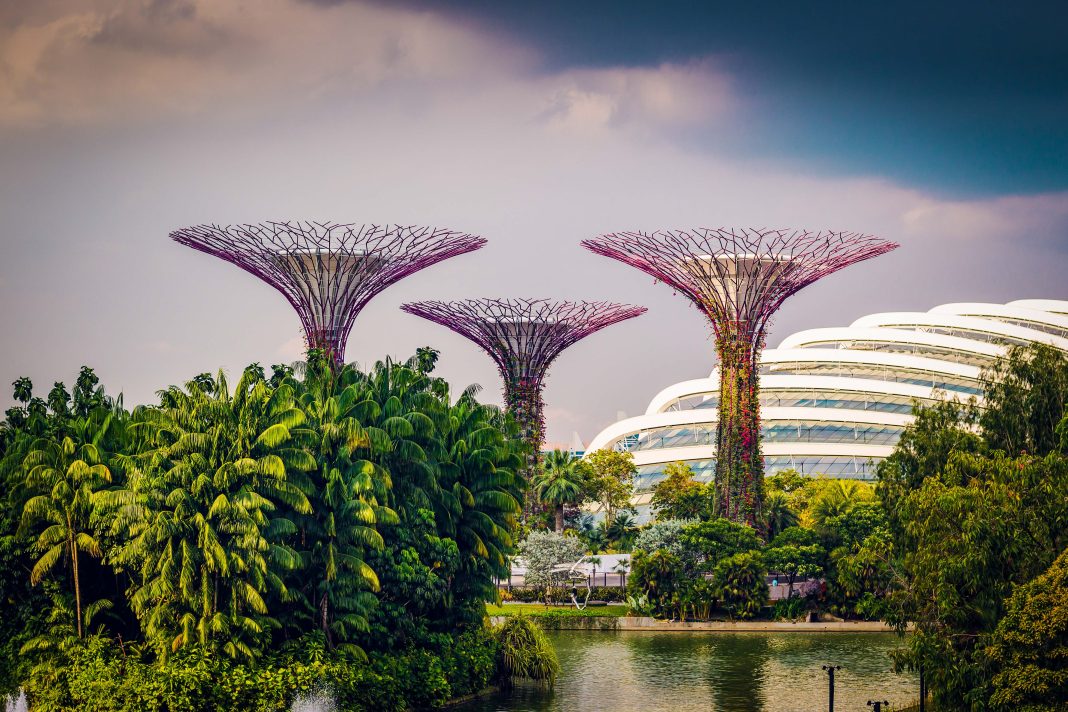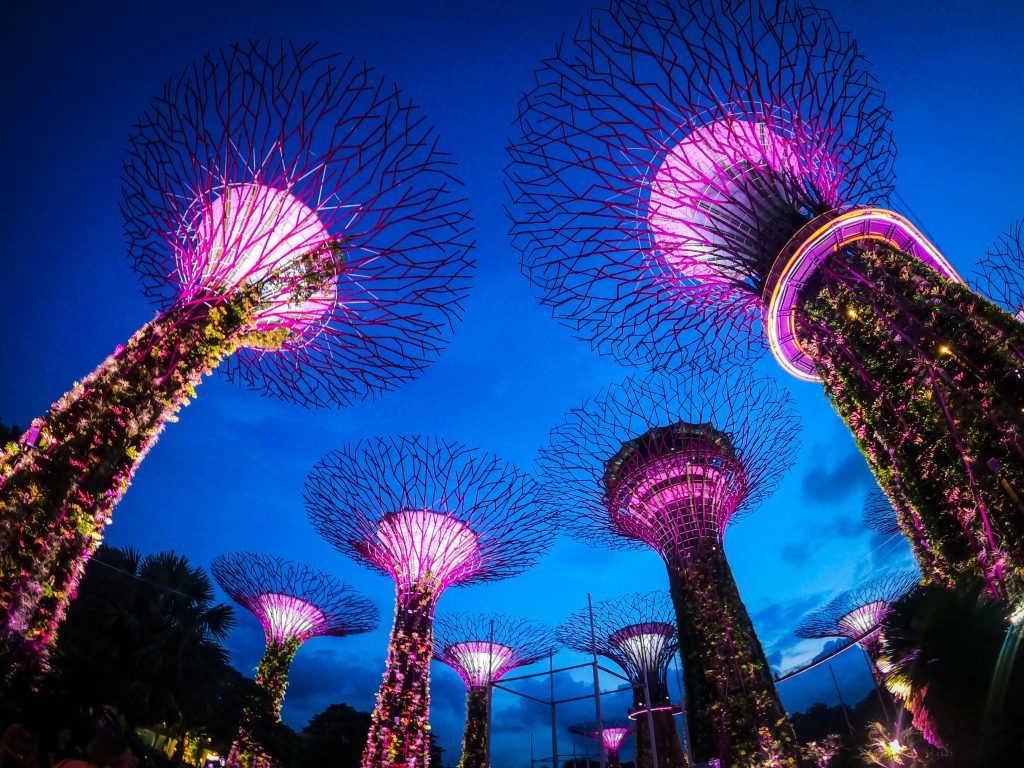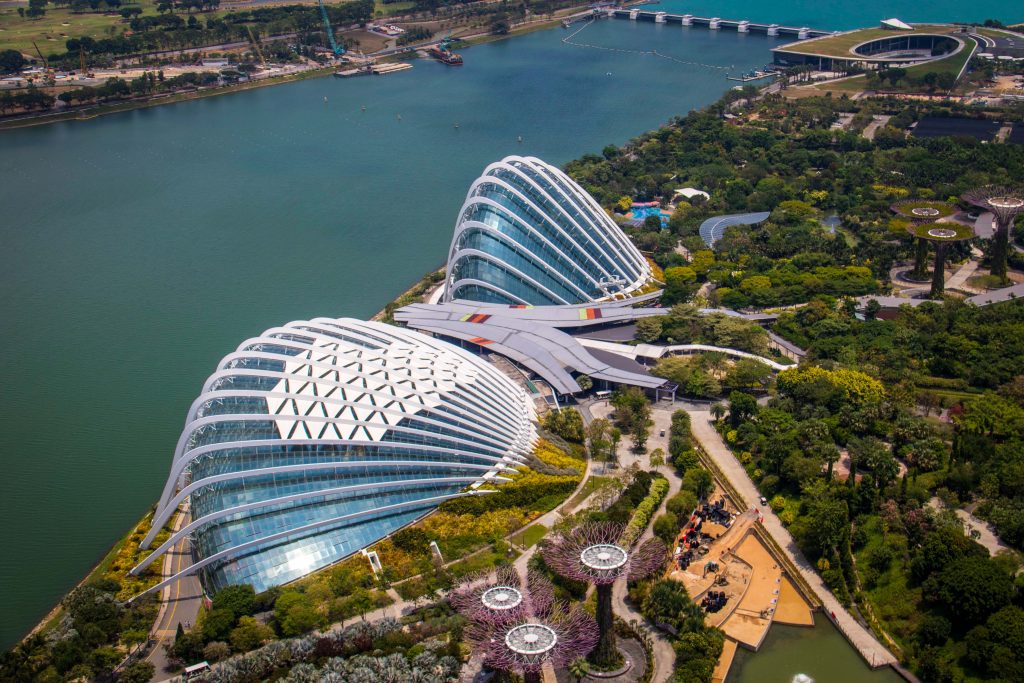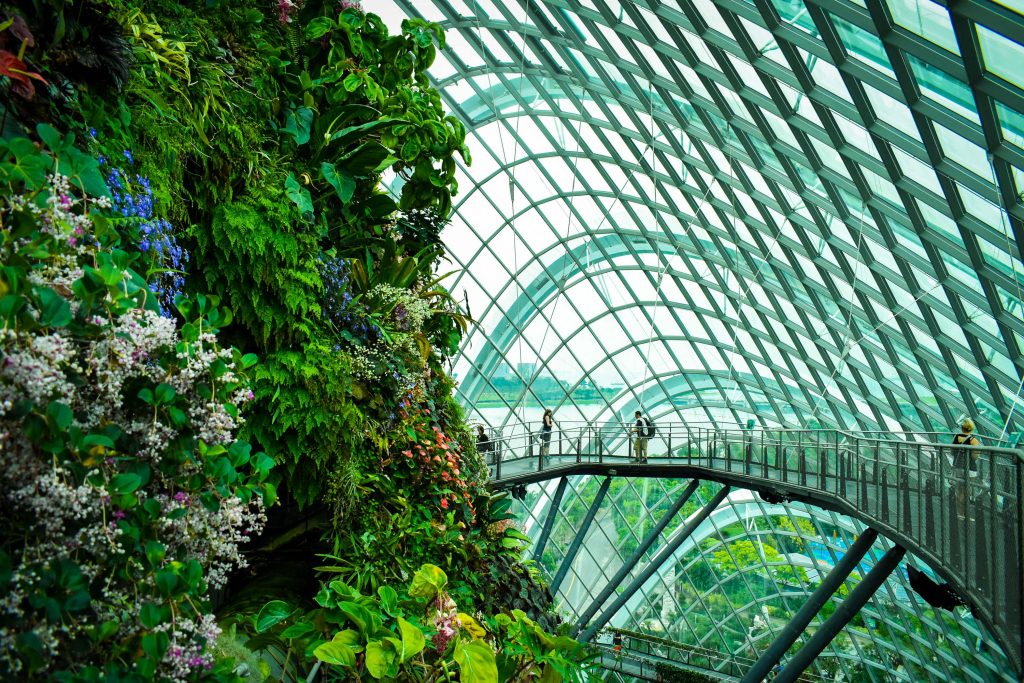Gardens by the Bay: an award-winning green haven in the middle of Singapore. With its iconic architecture, innovative use of technologies, environmental sustainability, and horticultural displays, Singapore has established itself as one of our notable cities. As 2022 marks the Gardens 10th anniversary, we reached out to the project team of Gardens by the Bay to get insights into how the park came to be and what it represents for the future of sustainable design. Here is where you get to read it.
Gardens by the Bay is a nature park in Singapore, next to its marina (hence the name). It provides a green escape from a bustling city, boasting with various plant types and aesthetically pleasing architecture. Its futuristic design has already attracted more than 50 million visitors and tourists from around the world. But there is more under the surface of the Gardens than meets the eye. The park is not only pleasing to the eye and educational but stands as an icon for incorporating sustainability features in the modern world’s design.
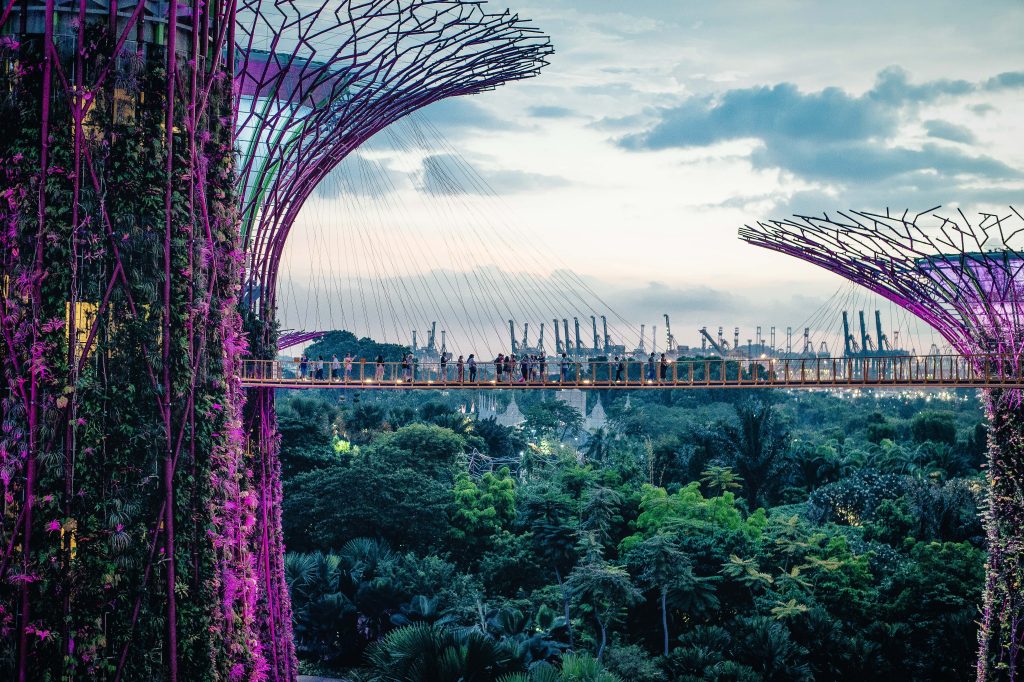
The Sustainability Aspect
The team of Gardens by the Bay told us:
“Conceptualised as a People’s Garden for all Singaporeans to enjoy, [Gardens by the Bay is] a key part of this national effort. It raises the quality of the living environment and contributes to the social cohesion of the nation.”
Gardens by the Bay consist of three gardens:
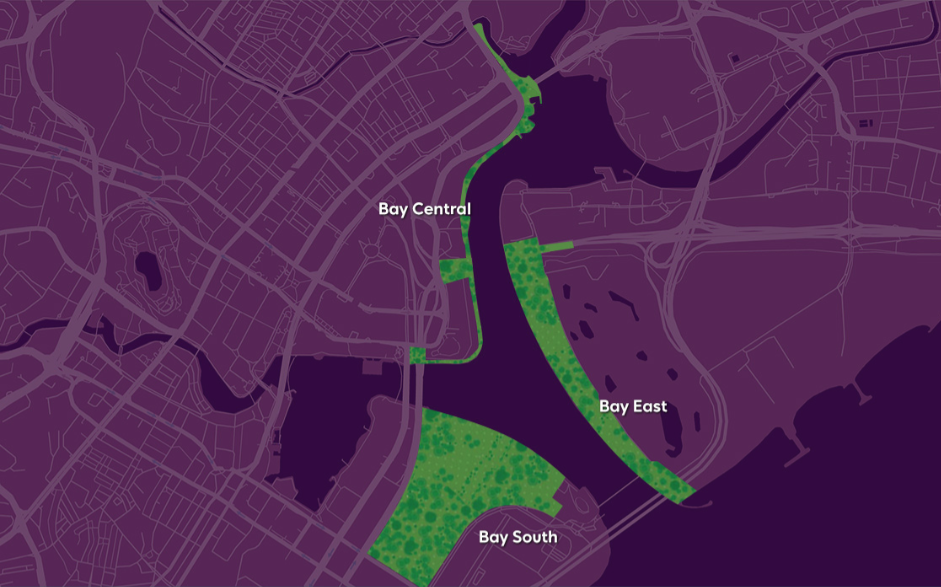
Bay South. Largest of the trees, most known for the Flower Dome, with its changing floral displays.
Bay East. Second largest, most known for the view of Singapore’s skyline.
Bay Central. Serves as a link between Bay South and Bay East, showcasing the 3-km-long waterfront promenade.
“A concerted effort was made to plan and design for sustainable cycles in energy and water use.”
Just how do the Gardens manage to do that?
- Horticultural waste is collected and turned into woodchips, which are then burnt in a biomass boiler. Its energy is used for cooling the conservatories.
- Solar energy lights up the Supertrees.
- Rain is captured in the lakes, cleaned by aquatic plants, and used for irrigating the Gardens.

Find out more in this video:
To achieve all these sustainability features, the team had to combine various aspects from different fields of study, including climate engineering, the geotechnical field, and irrigation. Before building the final version, however, prototype glasshouses were used to test all these ideas and designs of the Gardens.
Conceptualisation and Realisation of the Gardens
“Greenery has always been central to Singapore’s identity. Since the 1960s, Singapore has cultivated an international repute as a Garden City. The challenge moving forward was for the nation to take this greening effort to the next level and to ensure that greenery remained pervasive even in the midst of urbanisation. Hence the shift from “Garden City” to “City in a Garden”, and now towards a “City in Nature” vision,” explains the team.
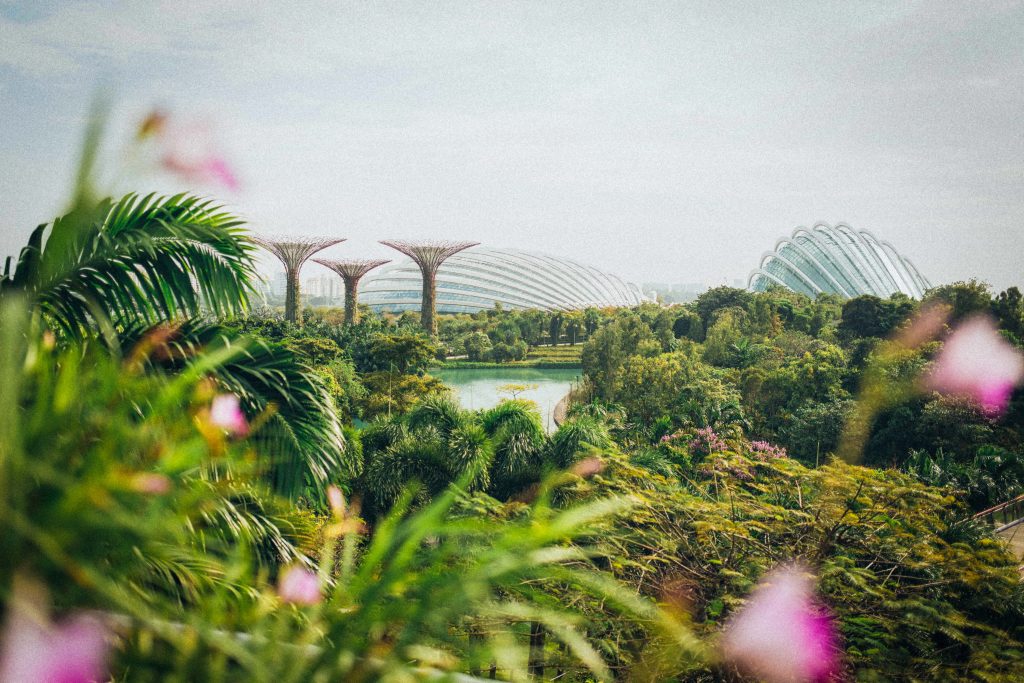
The project was “conceived and developed by a home-grown team,” we learned. Its development was first envisioned by Dr Kiat W. Tan, a committed founding CEO of the National Parks Board to conserve “natural heritage in an increasingly urbanised Singapore.”
The idea of Gardens by the Bay was then presented to the Singapore Cabinet in 2004 as a space that would both enable communities to bond and interact and attract investors as well as talents from emerging markets.
It was later, in 2007, that the development of Gardens by the Bay began, with Dr Tan leading a multidisciplinary team.
The Gardens by the Bay team collaborated with UK’s architecture practice Grant Associates and local contractors. “The synergistic partnership between staff, consultants, local contractors and government agencies facilitated in translating the dream of creating a People’s Garden into reality,” reports the team.
The Gardens officially opened to the public in 2012; thus 2022 marks its 10th anniversary.
Challenges to Green Design
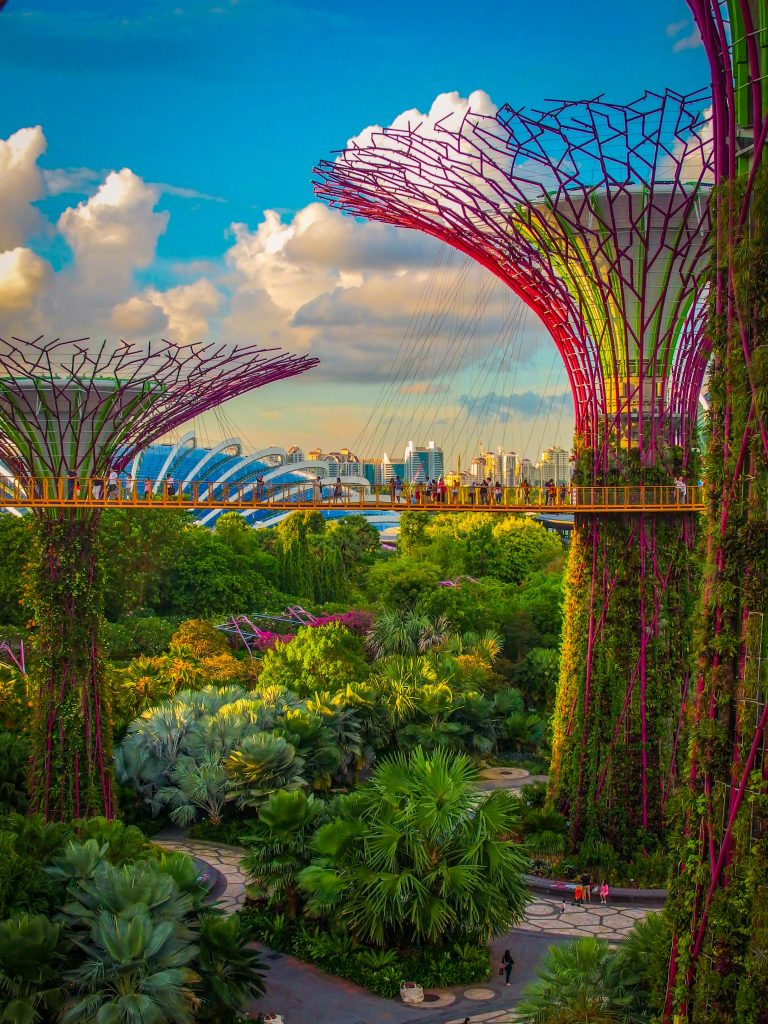
When asked about the biggest challenge, the team reports it was the nature and scale of the Gardens itself: “After all, Gardens by the Bay was unprecedented and ahead of its time, going beyond horticulture and landscape architecture to encompass a multitude of disciplines ranging from architecture to structural and environmental engineering.”
The original site was a blank canvas. With barren land, lacking roads, drains, and electricity, and the land being reclaimed, the team didn’t have it easy. Associated works had to be carried out prior to the development of the project.
Besides considering the aesthetically pleasing design, the sustainability features, infrastructure, etc., greening also turned out to be a challenge of its own. The team had only five years to develop the Gardens, with fully
matured plants, they had to think outside the
box. Therefore, some of the trees were transplanted from other parts of
Singapore while the Supertrees provided immediate dimension to the Gardens.
“Every aspect of the project was deliberated on carefully – the aesthetics and functionality of the garden design, the diversity of plant materials, the sustainability of the systems, and the educational value and social benefit that the Gardens could offer.”
Green Success
Despite the challenges, the Gardens is undoubtedly one of the most recognised innovative projects worldwide.
As 2022 is the Gardens 10th anniversary, the team reflects on all its achievements:
- The Gardens featured in the BBC’s documentary series Planet Earth II as an example of how greenery can be integrated into urbanised cities.
- The Gardens has become an iconic horticultural attraction.
- The Supertrees and Cooled Conservatories, Flower Dome and Cloud Forest have become internationally recognised symbols of Singapore.
- The Gardens received numerous awards, such as World Building of the Year 2012, Design of the Year 2013, 2019 World Urban Parks Legacy Award, and many more. For a full list, click here.
The Future Inspired by the Gardens
What lies ahead? “The Gardens is a living entity and will continue to grow and evolve, offering both residents and tourists a place for recreation and respite from urban living,” reports the team. Since its opening, new attractions have been added:
- Far East Organization’s Children’s Garden
- Sun Pavilion (showcasing cacti and succulent plants)
- The Canyon (rock garden)
- Serene Garden (Japanese-inspired rock garden)
- Floral Fantasy (showcasing floral artistry)
- Supertree Observatory at the top of the tallest Supertree
- Orchid Haven (dedicated place for orchids in Cloud Forest)
“We have shown that there are creative ways to incorporate nature in an urban landscape – even on reclaimed land.”
Gardens by the Bay exhibits a successful real-life example of taking an ecologically oriented approach to urban development and showcases the potential of sustainable development. This project is a perfect example that building sustainably, if effectively thought through, is possible.


